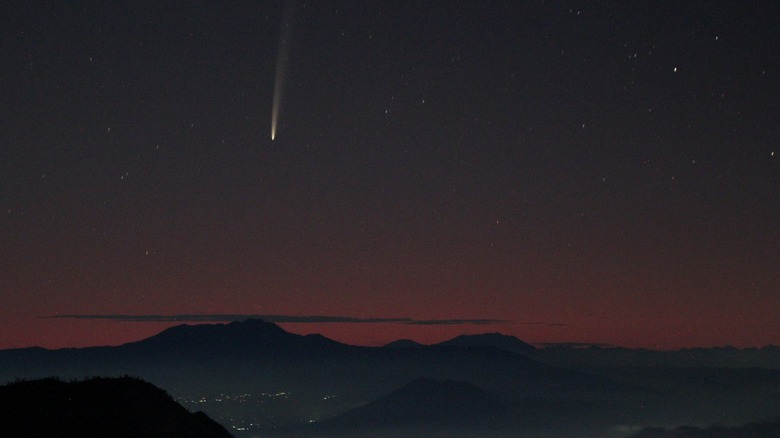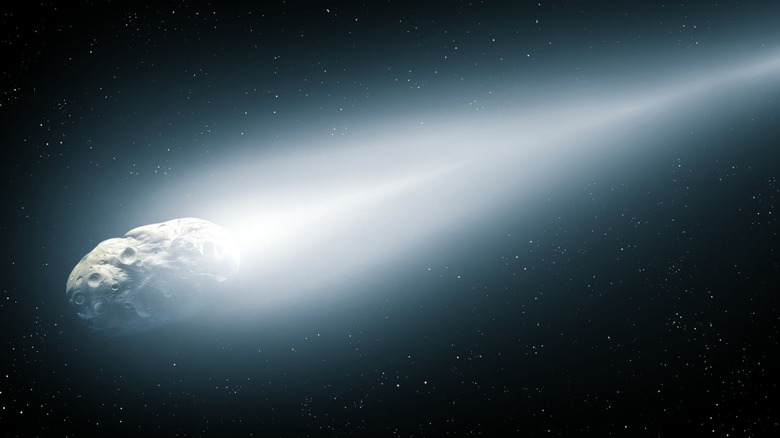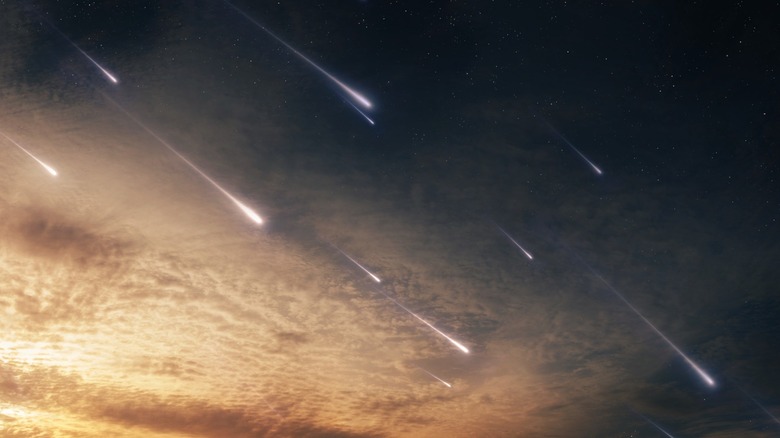These Two Comets Will Be Visible All October – Here's How You Can See Them
With Halloween decorations, such as Home Depot's 10-foot skeletons, becoming as popular as Christmas decorations, October is a great time to see all kinds of spooky and cool light shows in your neighborhood. However, nature is putting on a show of its own this fall with not one but two comets you can see from your yard. The first comet, which will make its closest approach (about 24 million miles) to Earth on October 19, is C/2025 R2 (SWAN). If you've wondering why you've never heard of such a comet, it's because it was only just discovered last month by amateur astronomer, Vladimir Bezugly.
Because R2 SWAN was coming from the same direction as the sun, the bright light of our closest star was drowning out the faint glow of the comet. Late last month, it became visible from Earth's Southern Hermisphere, but now residents north of the equator will have a chance to see it. The farther you are from cities and other areas with light pollution, the better you'll be able to observe R2 SWAN. Look to the southwest starting around an hour after sunset. It may be bright enough to see with the naked eye, though you'll have better luck using a pair of binoculars. For an even better look at the comet, you can also use one of the best telescopes for beginners.
The second comet appearing this month is C/2025 A6 (Lemmon), named after Mt. Lemmon SkyCenter — the observatory where it was discovered last January. You'll also want binoculars or a telescope to observe A6 (Lemmon), but where to look depends on when you're trying to find it. It comes closest to Earth on October 21, when it will be close to the northwestern horizon.
How are comets different from asteroids?
The comet C/2025 A6 (Lemmon) will likely get brighter as it gets closer, but astronomers don't know this for sure. That's because comets, unlike most asteroids, are relatively unstable, which makes them harder to predict. Asteroids consist mainly of rock and orbit the sun in mostly consistent paths, just like Earth and other planets in our solar system, except obviously they are much, much smaller.
Comets, on the other hand, pass through the solar system on much wider orbits. Rather than hard rock, they're usually made of dust and ice — astronomers describe them as "dirty snowballs" hurling through space. When far from the sun, this dust and ice stays frozen solid, but as a comet gets closer it begins to warm up. This thaws out the comet and releases volatile gases, which eject from the nucleus of the comet in unpredictable ways. These particles then trail behind the comet, forming a tail — the defining characteristic of how many of us picture comets.
A comet may get brighter as it gets closer to Earth, but not necessarily. If much of its ice — which is highly reflective — is ejected early on during this unstable thawing, then the comet can actually become dimmer as it approaches. Because both comets appearing this month are new, astronomers are less sure of what they're made of and how they will react and appear as they travel closer to the sun. There's even a chance C/2025 R2 (SWAN) will disintegrate completely and not even be visible by the time it makes its closest approach on October 19. Fortunately, if that does happen, stargazers will still have the chance to see some cool stuff before the month is over.
This October also features a supermoon and an upcoming meteor shower
Comets C/2025 R2 (SWAN) and C/2025 A6 (Lemmon) aren't the only space phenomena occurring this October. The month already saw a supermoon, which occurred on October 6. A supermoon is when our moon is not only full but also at the point in its orbit that's closest to Earth, which is called its perigee. This double whammy allows the moon to appear up to 14% larger and 30% brighter than when it's at its apogee, or farthest point from our planet. Don't worry if you missed October's supermoon, though — there will be two more supermoons later this year.
One reason it's good that the supermoon has already passed is that it means we will have a new moon later this month. With no moonlight in the sky, you'll have the best chance at catching the annual Orionid meteor shower, which peaks between October 20 and 21. Meteors are pieces of asteroids and comets, or other smaller space debris, that pass through Earth's atmosphere and burn up along the way. We can see this brief burning up, which is why meteors are also known as shooting stars. At the peak of the Orionid meteor shower, there will be an average of 20 meteors per hour.
As with viewing comets, the darker the sky, the better chance you'll have seeing shooting stars. If you're in the Northern Hemisphere, look for the Orionids toward the southeast, and if you're in the Southern Hemisphere look toward the northeast. Since the peak of the shower is roughly the same time as both comets' closest approach, you may even be able to catch all three in the same October evening — which is decidedly cooler than your neighbors' Halloween lights.


